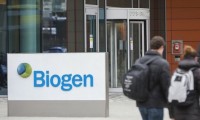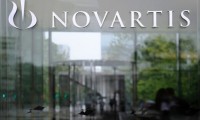-
BMS reports 2% revenue loss in 2023 after Revlimid generics hurt sales
- Source: drugdu
- 96
- February 8, 2024
-
Biogen abandons Aduhelm efforts, focuses on Eisai-partnered Leqembi and pipeline drugs
- Source: drugdu
- 205
- February 2, 2024
-
Key Trends from the 2024 J.P. Morgan Healthcare Conference
- Source: drugdu
- 91
- January 27, 2024
-
S&P Global Releases Healthcare Industry Outlook for 2024
- Source: drugdu
- 185
- January 15, 2024
-
Pfizer PARP inhibitor Talzenna nabs EU combo nod
- Source: drugdu
- 126
- January 11, 2024
-
Novartis Returns to Voyager Therapeutics to Reach New Gene Therapy Destinations
- Source: drugdu
- 211
- January 4, 2024
-
After a down year, FDA signs off on a bounty of new meds, including 7 from Pfizer
- Source: drugdu
- 224
- January 4, 2024
-
BMS agrees to acquire Karuna Therapeutics for $14bn
- Source: drugdu
- 209
- December 28, 2023
-
GLP-1 agonists can blunt obesity-associated health problems
- Source: drugdu
- 123
- December 18, 2023
-
Discovery of Rogue Protein Paves Way for Diagnostic Test to Detect Early-Onset Dementia
- Source: drugdu
- 93
- December 12, 2023
your submission has already been received.
OK
Subscribe
Please enter a valid Email address!
Submit
The most relevant industry news & insight will be sent to you every two weeks.













